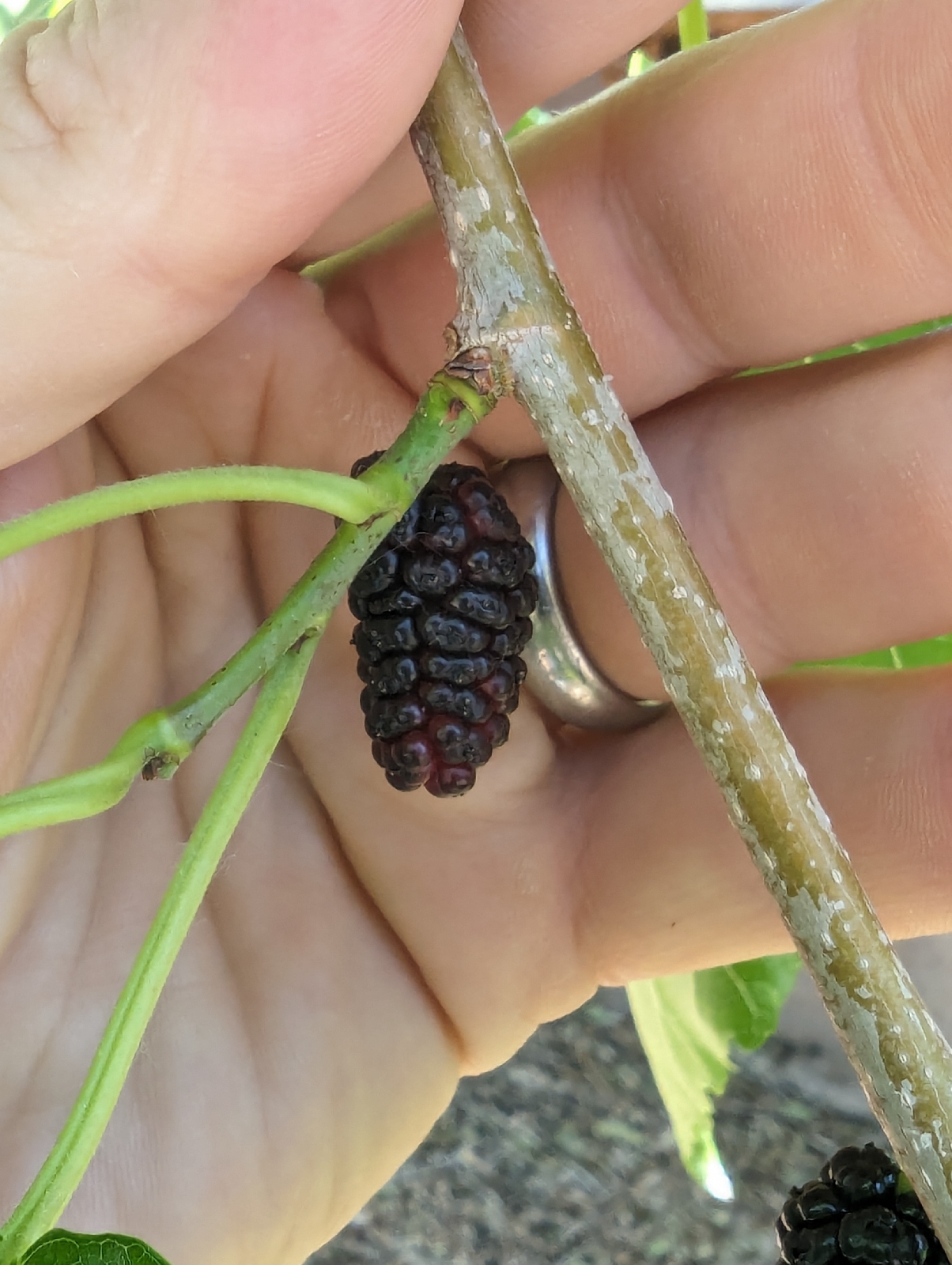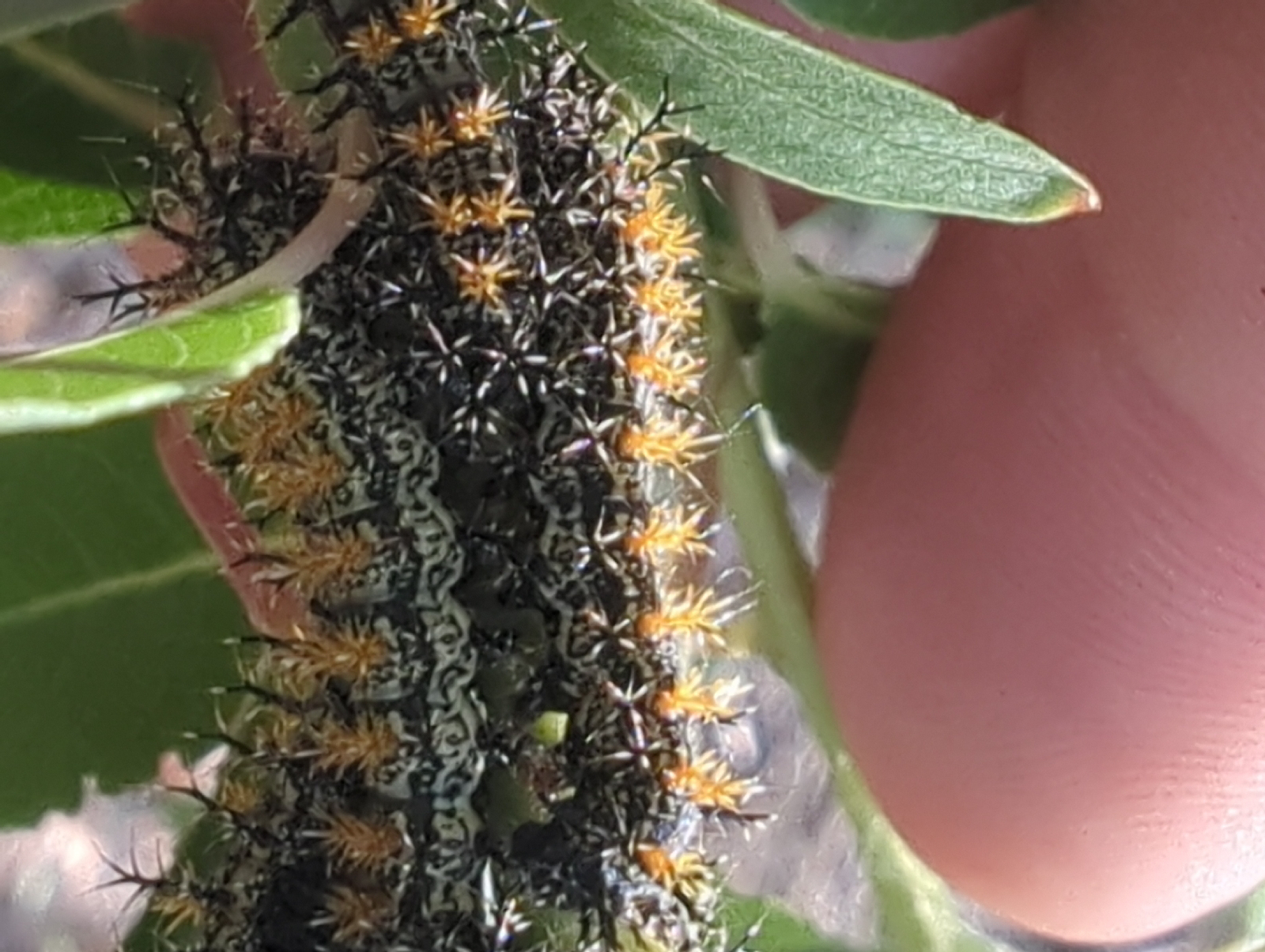"The ways of God in Nature, as in Providence, are not as our ways; nor are the models that we frame any way commensurate to the vastness, profundity, and unsearchableness of His works" - Joseph Glanville
While a person is considered mad if they gaze long on a common scene such a a growing mulberry, it is still quite vitally important to, occasionally, look more deeply at the world around us to see the wonder. The romantic movement followed the age of enlightenment in Europe and sought to elevate the sublime and heroic. This lead to a lot of young aristocrats wandering around palace gardens and sighing deeply, but also allowed their spirit to grow along with the understanding of concepts such as compassion, observation, and philosophy. The nature world in endlessly deep and completely beguiling to those who have the time to look at it, and within themselves.
The mulberry tree is cultivated in many places as part of the practice of sericulture, or the production of silk from domesticated moths in the silkworm family. Also, the plant is toxic (except the fruits), the pollen is highly allergenic, (but only the male trees) and there are 150 species (but only 20 are accepted by most authorities). Also, the unripe fruit can be hallucinogenic. Vincent Van Gogh painted the less well known "Mulberry tree" one year before he died, Even though most silk is produced in China and exported to India, the city of Lyons in France has been weaving silk for over 2,000 years. The paper mulberry can be used to produce cloth. The dried leaves make a tea, the red fruits produce a wine. the polished wood is used to make instruments. The white mulberry is used to produce silks. The red mulberries are also relished by many birds and coyote scat is often found full of mulberry seeds. As with most plants, half the world sees it as an invasive, while the other have squanders it's usefulness. For the rest of this voluminous story follow this link.
In the summer there are so many lizards that no one gives them a second thought. However, these reptiles can also give us a glimpse into the..."vastness, profundity and unsearchablenss of His works". We see slim whiptails and stout fence lizards. like the one pictured. We rarely see bigger lizards or rattlesnakes. The habitat in the bosque benefits small insectivore reptiles who are good at evading hunting birds. Ambush hunters also cannot work well in places with so many places for prey to hide. In areas where there is open sunny areas and no domestic hunting pets, the density of small lizards can get very high.
Lizards are also expert uses of the tail, which are similar to the use that in dogs and cats and completely unappreciated by humans. Tails help turn faster at speed, control jumping better, they help store energy like a camel's hump, they signal fitness to other lizards, but can also be detached as a decoy. These are all vital because fence lizards are very territorial early in the mating season and must spend all day defending a patch of territory, while also feeding and watching for predators.
Typical flowers offer sugar rewards to insects that visit. they also offer pollen protein meals, some flowers. They advertise these wares with colors (including landing patterns and ultraviolet shapes) and scents that range from pleasant to us to downright fetid. Some flowers like globe mallow and cactus also provide a place to shelter. Yet other plants can also provide egg laying sites for their pollinators, like the milkweeds. Flowers change their shapes to either make it easier or harder to pollinate. Some orchids even mimic female bees to encourage visits. Other plants, like some magnolias, generate heat at flowering times, which brings many benefits for improved pollen transfer.
Corrales is lucky to have many fledged birds in the bosque. Here we see the amazing great horned owl who are about five months old now. While their camouflage skills are a little lacking, they are clearly up early (for owls) and eager to explore their surroundings. These birds need lots of old growth cottonwoods that allow them to clamber and explore. Many will nest close to their birth location bringing delight to those who follow their growth progress.
There is probably some metaphor in the fact that the dustiest days bring the best sunsets, but I'm not looking it up right now. Everyone can probably reflect that just experiencing a moment with the senses is far preferable to trying to get a decent picture to share with strangers for kudos points. But I will admit photos are far better at evoking the memories as we get older. So, out of the hundreds of sunsets seen, and yet to see, here is a nice example captured in Corrales. A boiling plasma orb weighting 2.192x1027 tons with light filtered and refracted through the edge of our Earth's 6,000 mile thick atmosphere. Even travelling at 185,000 miles a second the light in this this picture was at least eight minutes out of date when it was taken.
yerba mansa has quite the reputation as a medicinal herb. There is a huge body of literature surrounding it and it is also a very pretty marsh flower. However, you should still be suspicious of grandiose claims for a plant that isn't found in a pharmacy or supermarket shelves. It seems to be more of a cultural metaphor than a cure.
narrowleaf willow. Pollen season seems to be winding down in the tree species, as the cottonwoods continue to throw their seeds into the winds. Many stamens have pollen however, you can see them on the salt tamarisks as well as the willows, like this one.
Many bird species will produce more than one brood in a season. This is the empty nest of a local Say's phoebe. If a bird isn't careful, however, the build up of parasites such as ticks, fleas and lice can weaken the fledglings. Birds actually have many behaviors to reduce this problem, including keeping a large territory, preening, removing old material and reducing the number of brood raised in a year. This nest material appears to be made primarily of anti weed landscaping material.
The number of raptors in the bosque is reduced somewhat by the territoriality of hummingbirds and king birds, who relentlessly dive bomb, harass and warn other birds of their presence. Coopers hawks seem to limit this effort by being continuously on the move. They have definitely learnt to target bird feeders, too.
common thread waisted wasp. The nice thing about Summer is that the heat allows bigger insects to be active, this allows people to observe them better. Of course, most people do not appreciate the larger wasps, but many of those insects are completely innocuous and do much good for the ecosystem by hunting all manner of flies and tree living critters.
culicine mosquito. This mosquito does not transmit malaria, but can transmit west nile virus. With all the research that has been done on mosquitos it can be strange to see that we have a very poor understanding of the whole process.
chipping sparrow. Fledgling is a complex and difficult process for many birds. There are many miserable wildlife rehabbers who have to take care of all the baby birds that would have been simply left out until they were able to return to the parents. This particular sparrow is very comfortable to the ground and around grasses. The camouflage is very effective if it isn't moving.
woodhouse toads receive absolutely zero parenting skills and can only rely on their instincts to survive. I always wonder how an amphibian so badly designed at swimming can do so well, and the secret is their jack-of-all-trades mentality. they can hop, swim, crawl and dig their way around most problems. It helps that there is a surprisingly large number of them around.
black dancer caddisfly. This mating pair shows the importance of reproduction to success. With no defenses and constant hunting pressures, caddis flies are vital to waters where there are trout.
bumblebees in the United states always are under threat because they are large, slow insects who have specialized needs that includes not being in too large a concentration where they compete with each other for scarce resources, like pollen. Most modern gardens are surprisingly inhospitable to insects.
buffalo gourd are a quintessential summer bloom and seen often around the state, especially along roadsides in grassland areas. the fact that this plant can be eaten with many precautions is a testament to the fact that just about anything can be food with the right motivation. This plant has a deep taproot that allows the plant to survive droughts and high temperatures.
The tendrils of the buffalo gourd can be used to ensnare nearby structures to allow climbing. While not often seen, this gourd is capable to climbing as a vine. The plant contains oil, starches and protein, but takes some work to overcome the rather fetid smell it produces.
Meshweavers are very common but not often studied. They have a complicated spinning organ that makes wooly silk that entangles and enstanres without needing any type of glue. Some of these spider species exist in very small numbers in specific cave systems in Texas.
Zelia is a fly found all over the US that is a beetle parasite. Few if anyone would notice the fly if It was missing, but everyone would remark if there was more than normal numbers of these insects who's name is a reference to their persistent flying nature.
Hadenini genus of moth. Scientists are still trying to figure out how to classify this cutworm species. The common name comes from the fact that the caterpillars cut down the young plants before they can grow much. Not very romantic, but fascinating to study. Many insects have a lot more to offer than simply being a subject of utilitarian study of purpose for farmers or their customers. Studying insects is not a common form of escapism, but should be. Humans have more free time than has ever existed in history and if can find a purpose beyond watching cat videos on the internet it should be understanding ourselves a bit more as well understand the small things in the world around us.



























No comments:
Post a Comment